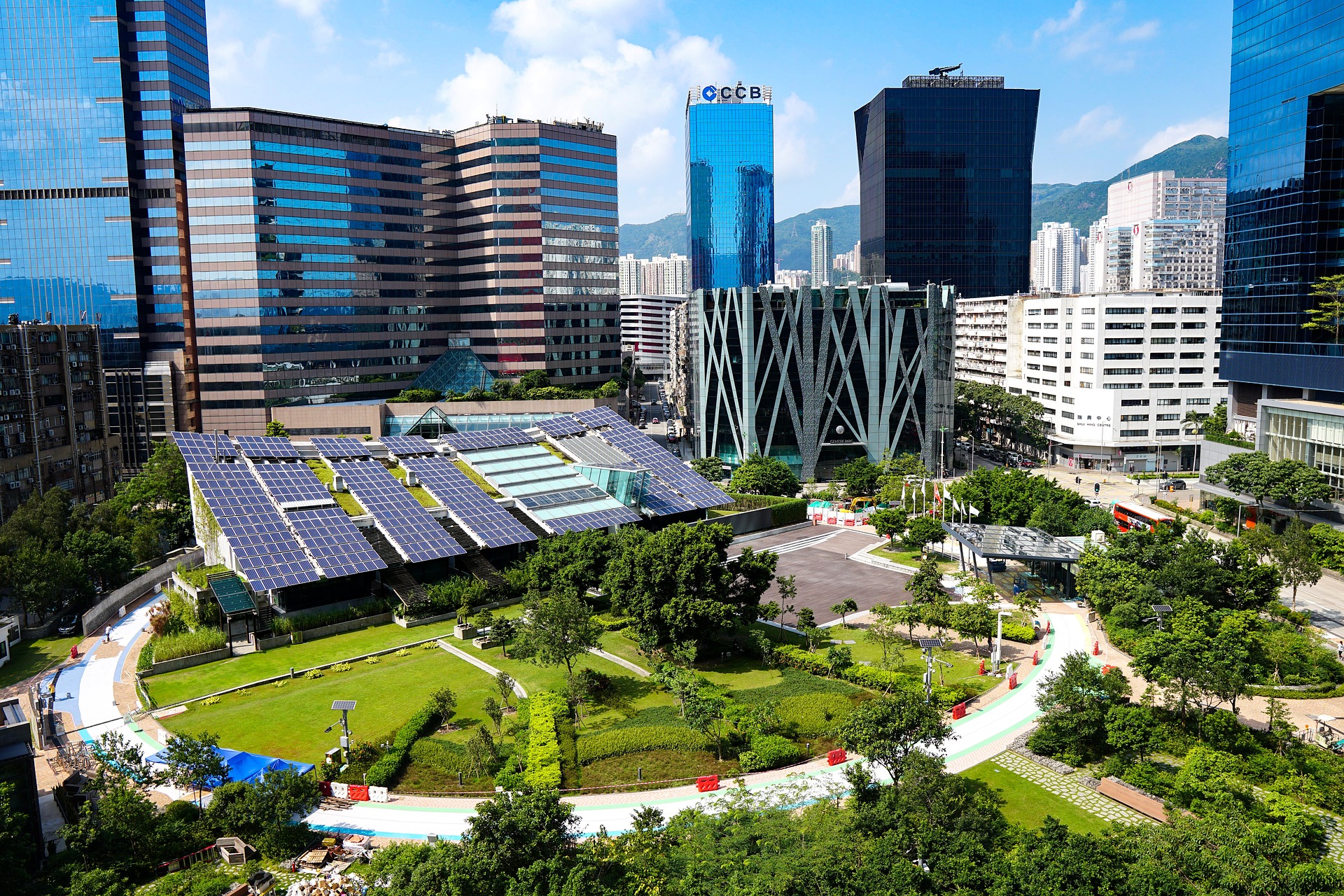Commercial Solar Panels Lifespan: Unveiling the Longevity
In a world where energy needs are ever-growing and environmental concerns loom large, the emergence of commercial solar panels has been nothing short of revolutionary. These unassuming panels, adorned with photovoltaic cells, have silently ushered in an era of sustainable power generation.
But as we marvel at their efficiency, there’s a pressing question: How long can these renewable wonders truly endure? In this in-depth exploration of “Commercial Solar Panels Lifespan,” we venture into the heart of solar energy, uncovering the science, dispelling the myths, and embracing the humor that keeps our journey light. Get ready to be captivated by the secrets behind the extended lifespan of these powerhouses and gain insights that will light up your understanding.
Understanding the Heart of Energy Revolution: Commercial Solar Panels
Standing tall atop rooftops and sprawling across solar farms, commercial solar panels have become synonymous with clean energy generation. These panels, composed of photovoltaic cells, capture sunlight and convert it into electricity, offering a sustainable alternative to traditional power sources.
However, their significance goes beyond the conversion of photons into electrons. The lifespan of commercial solar panels is a topic that intrigues experts and energy enthusiasts alike. It’s not merely a question of years – it’s about their enduring impact on our environment and economy.
Factors that Stand the Test of Time: Unveiling Lifespan Determinants
While we might be accustomed to the longevity of everyday items like light bulbs, the lifespan of commercial solar panels is an entirely different story. Multiple factors intertwine to dictate how long these panels will continue to produce clean energy. The quality of the initial installation is a cornerstone; a well-installed system provides a robust foundation for years of service.
Manufacturing techniques, too, play a crucial role – the precision of assembly, the quality of materials used, and the attention to detail determine the panel’s resilience. Moreover, maintenance practices are pivotal in ensuring a prolonged lifespan. Regular inspections, cleaning, and addressing minor issues promptly can significantly enhance a panel’s longevity. As we navigate these factors, we find that the lifespan of commercial solar panels is a tapestry woven with care, precision, and sustainable practices.
Solar Panel Anatomy: Navigating the Components for Longevity
As we peer beneath the surface of a commercial solar panel, we discover a symphony of components working in harmony. The photovoltaic cells, typically made of silicon, are the stars of the show, absorbing sunlight and generating direct current (DC) electricity. These cells are encapsulated within protective layers, safeguarding them from environmental factors and physical damage.
The backsheet, often made of polymer or other materials, provides electrical insulation and further protection. Supporting frames, usually constructed from aluminum, offer structural stability. And let’s not forget the junction box, which houses the wiring connections and facilitates electrical flow. Understanding the role each element plays reveals how meticulous design and quality materials contribute to a panel’s extended lifespan.
Weathering the Elements: How Climate Shapes Solar Panel Lifespan
Picture this: a solar panel in the desert, where temperatures can scorch the earth, versus one by the coastline, where salt-laden air can corrode surfaces. Climate isn’t just an abstract concept – it’s a powerful force that directly influences the lifespan of commercial solar panels. Extreme heat can accelerate wear and tear on components, potentially shortening a panel’s operational life. On the other hand, locations with high humidity levels or heavy precipitation might expose panels to water damage and increase susceptibility to rust. Understanding the unique challenges posed by different climates allows us to take proactive measures to mitigate potential damage and optimize lifespan.

Nurturing Sun-Soaked Giants: Regular Maintenance and Lifespan Maximization
Imagine having a high-performance sports car but never changing the oil or rotating the tires – eventually, performance would degrade. Commercial solar panels are no different. While they are designed to withstand the elements, routine maintenance is essential to keep them functioning optimally.
Regular cleaning is crucial; dirt, dust, and debris can accumulate and hinder sunlight absorption. Additionally, addressing minor issues promptly can prevent them from escalating and causing more significant problems. It’s a bit like giving your solar panels a spa day – a refreshing cleanse that ensures they continue to shine brightly.
Pushing the Boundaries: Scientific Breakthroughs in Solar Panel Longevity
In the realm of solar energy, science and technology are relentless in their pursuit of innovation. Researchers are on a quest to enhance solar panel longevity through scientific breakthroughs. One remarkable advancement involves self-cleaning coatings inspired by nature. Mimicking the behavior of lotus leaves, these coatings repel dust and dirt, reducing the need for manual cleaning.
Another exciting avenue is advanced cooling technology. Excessive heat can impair a solar panel’s efficiency and lifespan. Novel cooling solutions, such as embedding microfluidic channels, dissipate heat and maintain optimal operating conditions. These innovations are a testament to human ingenuity – we’re not just harnessing sunlight; we’re also harnessing creativity to maximize longevity.
Decoding Aging: Early Detection and Mitigation of Panel Degradation
Like fine wines, solar panels mature with age, but unlike wines, they can degrade over time. Detecting early signs of aging is essential to prevent further deterioration. Monitoring energy output is a useful indicator – a decline in energy production could signal degradation. Visual cues, such as discoloration or damaged components, also warrant attention. Mitigating degradation involves addressing issues promptly and, in some cases, considering replacements. Think of it as a medical check-up for your solar panels – early detection and intervention can lead to a healthier, longer life.
Myth Busting: Debunking Common Misconceptions about Lifespan
Myths tend to swirl around any topic of interest, and the lifespan of commercial solar panels is no exception. One prevailing myth suggests that solar panels have a fixed lifespan, after which they become inert. In reality, solar panels degrade over time, but they don’t suddenly stop working.
The rate of degradation varies based on factors such as manufacturing quality, maintenance, and environmental conditions. Another myth involves solar panels “using up” all their energy-generating potential after a certain period. This couldn’t be further from the truth – even as panels age, they can continue to produce electricity, albeit at a slightly reduced efficiency. Debunking these myths is like replacing misinformation with solar-powered facts.
A Second Life: Sustainable Disposal and Solar Panel Recycling
As responsible stewards of the environment, we must consider the end of a solar panel’s operational life. Disposal is a concern, given the presence of materials that may not be biodegradable. However, the story doesn’t end with retirement. Solar panel recycling has emerged as a sustainable solution. Various elements, including glass, aluminum, and silicon, can be recovered and repurposed. This practice reduces waste, conserves resources, and aligns with the principles of a circular economy. It’s akin to giving solar panels a second chance – not just at life, but at contributing to a greener planet.
Solar Economics: Long-Term Savings and Lifespan Impact
Choosing solar panels isn’t just an environmental decision; it’s a financial one too. The lifespan of commercial solar panels has a direct impact on the economics of solar energy. Consider this: When you invest in solar panels, you’re essentially locking in your energy costs for decades. As utility prices rise, your savings from solar also increase. A longer panel lifespan translates to more years of cost savings and a higher return on investment. It’s like planting a money tree that thrives under the sun’s care – the longer it lives, the more it yields.
Industry Insights: Experts’ Strategies for Prolonging Panel Lifespan
Who better to turn to for advice on solar panel longevity than those immersed in the industry? Experts in solar energy emphasize the importance of regular maintenance, including inspections, cleaning, and addressing minor issues. They also stress the significance of quality installations that consider factors like panel orientation and tilt for optimal sunlight absorption. The use of protective measures, such as coatings that repel dirt, is also recommended. Their insights are akin to having seasoned gardeners tend to your solar power garden – they know how to nurture it for bountiful yields.
Guardians of Endurance: Solar Panels’ Resilience to Extreme Conditions
Imagine a superhero designed to withstand any challenge that comes its way – that’s a solar panel for you. Hailstorms, snowfall, scorching heat – these panels are the guardians of endurance. Manufacturers engineer them to endure the harshest conditions, often subjecting them to rigorous testing. Reinforced frames and durable materials ensure they stand tall, no matter the weather. It’s as if these panels have donned capes and masks, ready to defend your energy future.

Beyond the Horizon: Innovations Shaping the Future of Longevity
The horizon of solar technology is ever-expanding, offering glimpses of what the future holds for solar panel longevity. Imagine solar panels that automatically adjust their angles to capture optimal sunlight throughout the day. Envision coatings that not only repel dust but also repair minor scratches. Visualize nanomaterials that enhance energy conversion efficiency. These innovations aren’t science fiction – they’re the building blocks of a more sustainable tomorrow. It’s like gazing into a crystal ball that reveals a brighter, more efficient future.
Triumph of Time: Stories of Long-Lasting Solar Farms
In a world driven by rapid changes, the stories of solar farms that have stood the test of time are inspirational. These tales underscore the significance of proper maintenance and quality installations. Consider the Topaz Solar Farm in California – with over 8 million solar panels, it has been generating clean energy since 2014. Such examples showcase the lasting impact of investing in solar energy. These stories are like heirloom seeds passed down through generations, bearing witness to the enduring power of the sun.
Illuminating Tomorrows: The Everlasting Promise of Solar Energy
As our journey through the lifespan of commercial solar panels draws to a close, we’re reminded of the profound promise they hold. They’re not just technological marvels; they’re beacons of a brighter, cleaner future. The extended lifespan of these panels isn’t just about numbers on a timeline; it’s about decades of continuous, sustainable energy generation. It’s a testament to human innovation and our dedication to preserving our planet for future generations. So, as the sun sets on this exploration, let’s embrace the ever-shining promise of solar energy, igniting tomorrows with the brilliance of today’s innovation.
Conclusion
In the realm of renewable energy, commercial solar panels stand as paragons of sustainability and longevity. They’re more than collections of photovoltaic cells; they’re symbols of our commitment to a cleaner, brighter future. As we traverse the intricate web of factors that influence their lifespan, one thing becomes evident: the potential for longevity is real. By harnessing the knowledge of installation, maintaining, and innovative breakthroughs, we hold the key to unlocking the full potential of these energy champions. As we bid adieu to this exploration, remember that the journey doesn’t end here. It continues in every ray of sunlight that powers our panels, in every watt of energy generated, and in every step toward a more sustainable world.
FAQs
1. Do commercial solar panels genuinely endure for decades?
Absolutely, commercial solar panels are designed with durability in mind. The lifespan of these panels can vary, but they typically have a lifespan of around 25 to 30 years or even more. Factors such as quality of manufacturing, installation, and maintenance practices play a significant role in determining how long they will last. With proper care, regular maintenance, and advancements in technology, it’s very possible for commercial solar panels to provide reliable energy generation for decades.
2. How often should I schedule maintenance for my commercial solar panels?
Regular maintenance is crucial to ensure the longevity and optimal performance of your commercial solar panels. It’s recommended to have them inspected and cleaned at least once or twice a year. However, the frequency might vary based on factors such as your geographical location and the prevailing weather conditions. If you’re in an area with heavy dust, pollution, or frequent storms, more frequent maintenance might be necessary. Regular maintenance includes cleaning the panels to remove dirt and debris, inspecting the wiring and connections, and addressing any minor issues promptly to prevent them from escalating.
3. Can extreme weather conditions significantly curtail the lifespan of solar panels?
While solar panels are designed to withstand a wide range of weather conditions, extreme weather can have an impact on their lifespan. For instance, severe hailstorms can potentially damage the surface of the panels, affecting their efficiency. Similarly, constant exposure to high temperatures or corrosive environments can accelerate wear and tear on components. However, manufacturers take these factors into account during design and construction, and quality panels are built to endure such conditions. Additionally, regular maintenance can help identify and address any damage caused by extreme weather, thereby minimizing its impact on the panel’s lifespan.
4. What happens when commercial solar panels reach the end of their operational life?
When commercial solar panels reach the end of their operational life, it doesn’t mean they suddenly stop working. Instead, their efficiency might gradually decline over time. However, even after their energy output decreases, they can continue to generate electricity. At this point, you might consider replacing them with newer, more efficient panels to maximize energy production. Fortunately, solar panel recycling programs are becoming more prevalent, allowing you to responsibly dispose of your old panels. These programs aim to recover valuable materials like glass, aluminum, and silicon for reuse, reducing environmental impact.
5. Are there government incentives or subsidies available for maintaining commercial solar panels?
While government incentives and subsidies are often available for installing new solar panels, there might not be specific incentives solely for maintaining them. However, some incentives could indirectly support maintenance efforts. For instance, if your solar panels are connected to a grid and you generate excess electricity, some regions allow you to sell this surplus back to the grid, earning you credits or payments. Additionally, keeping your panels well-maintained can contribute to their overall energy production, which means you’ll benefit more from the energy savings and potential incentives provided by your local utility company or government. Always check with local authorities to see if any maintenance-related incentives are available in your area.




